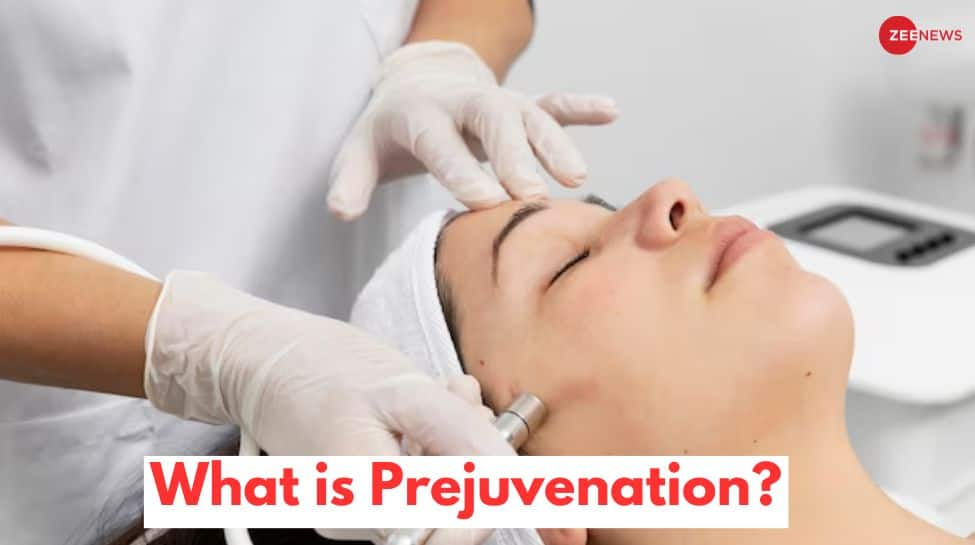As a dermatologist with years of experience in skin health and beauty, I have seen various skin care trends come and go. However, one emerging trend that promises to revolutionize our approach to skin health is “prejuvenation.” Unlike traditional anti-aging regimes that focus on reversing damage, prejuvenation emphasizes proactive measures to maintain youthful, healthy skin before obvious signs of aging appear.
Dr Neha Sharma, dermatologist at Astique Skin & Hair Clinic, explains why prejuvenation is going to be the next big thing in skin care.
When trying to understand what prejuvenation is, it is important to point out what it is not – rejuvenation. Since ancient times, rejuvenation has always been at the forefront of skin care. In your 30s, your body begins to produce less collagen, which causes your skin to become dry, thin and dull. As your skin loses the moisture it needs to stay supple, wrinkles and pigment spots begin to form and become more pronounced over time. Skin rejuvenation treatments aim to turn back time and make your skin look younger than its actual age.
Prejuvenation is a proactive approach to skin care that aims to prevent signs of aging before they appear. The concept is simple: start early with effective skin care practices and non-surgical treatments to maintain the youthful appearance and function of the skin. It is a preventive protocol that helps you achieve your skin goals such as boosting collagen production, preventing pigmentation, minimizing open pores, and delivering anti-aging benefits. This trend is gaining momentum among younger individuals who understand that prevention is better than cure, unlike previous generations where people waited for the first wrinkle to take action.
With the rise of regenerative medicine, prejuvenation includes preventing and even reversing aging at the cellular level
Why is prejuvenation important?
The skin is our largest organ and acts as a barrier against environmental aggressors such as UV radiation, pollution and free radicals. Over time, these factors, combined with the natural aging process, cause the degradation of collagen and elastin, resulting in wrinkles, fine lines and sagging skin. Prejuvenation attempts to minimize these effects before they become noticeable.
Key components of prejuvenation
1. Creating a skin care routine
One of the most important elements of prejuvenation is consistent sun protection. UV radiation contributes significantly to premature aging. Daily use of a broad-spectrum sunscreen with an SPF of 30 or higher helps prevent photoaging, hyperpigmentation, and skin cancer. Wearing protective clothing and staying in the shade are also essential practices.
Antioxidants, both oral and topical, play a huge role in neutralizing free radicals and preventing oxidative stress and aging. Incorporating antioxidant-rich products, such as serums containing vitamin C, vitamin E, and ferulic acid, can help protect the skin from environmental damage and enhance its natural repair processes.
Maintaining moisture in the skin is essential for looking youthful. Dehydrated skin is more prone to fine lines and dull skin. Using hydrating ingredients like hyaluronic acid, glycerin, epeptides and ceramides helps retain moisture, strengthen the skin barrier and keep the skin soft and supple. Retinoids, a derivative of vitamin A, are known for their anti-aging benefits. They stimulate collagen production, improve skin texture and promote cell turnover. Incorporating retinoids into a skincare routine at an early age can help maintain skin elasticity and prevent wrinkle formation.
2. Lifestyle factors
Prejuvenation goes beyond topical skin care products. A holistic approach involves adopting healthy lifestyle habits. A balanced diet rich in fruits, vegetables and omega-3 fatty acids maintains skin health from within. Regular exercise improves blood circulation, which increases the supply of nutrients to skin cells. Adequate sleep is essential for cell repair and regeneration, while stress management techniques, such as meditation and yoga, can prevent stress-induced skin problems
3. Professional treatment in clinic for prejuvenation
In addition to a solid skin care routine that can be done at home, professional treatments can also greatly enhance skin care efforts. Chemical peels involve applying a solution to the skin that exfoliates the outer layers, revealing the fresher and smoother skin underneath. Regular chemical peels can help improve skin tone, texture, and overall radiance.
Radiofrequency microneedling is one of the most effective treatments for collagen building. Microneedling uses fine needles to create controlled micro-injuries in the skin, stimulating collagen and elastin production. This treatment improves skin texture, boosts collagen production, reduces the appearance of fine lines and also reduces sagging.
Radiofrequency microneedling with platelet-rich plasma or exosomes once in 2-3 months has a huge impact in preventing skin sagging and improving its firmness.
Laser treatments target specific skin problems such as pigmentation, redness and texture irregularities. For example, fractional laser resurfacing promotes collagen production and skin renewal, making it a great prejuvenation option. Q Switch Nd Yag reduces pigmentation, improves uneven skin tone, dark spots and open pores.
Injections such as botulinum toxin and dermal fillers are usually associated with anti-aging, but they also play a role in prejuvenation. Botox can prevent the formation of dynamic wrinkles by relaxing facial muscles, while fillers restore volume and moisture to the skin.
As an experienced dermatologist, Dr. Neha encourages people of all ages to embrace prejuvenation and take proactive steps towards achieving long-term skin health. Remember, the best time to start taking care of your skin is now.
